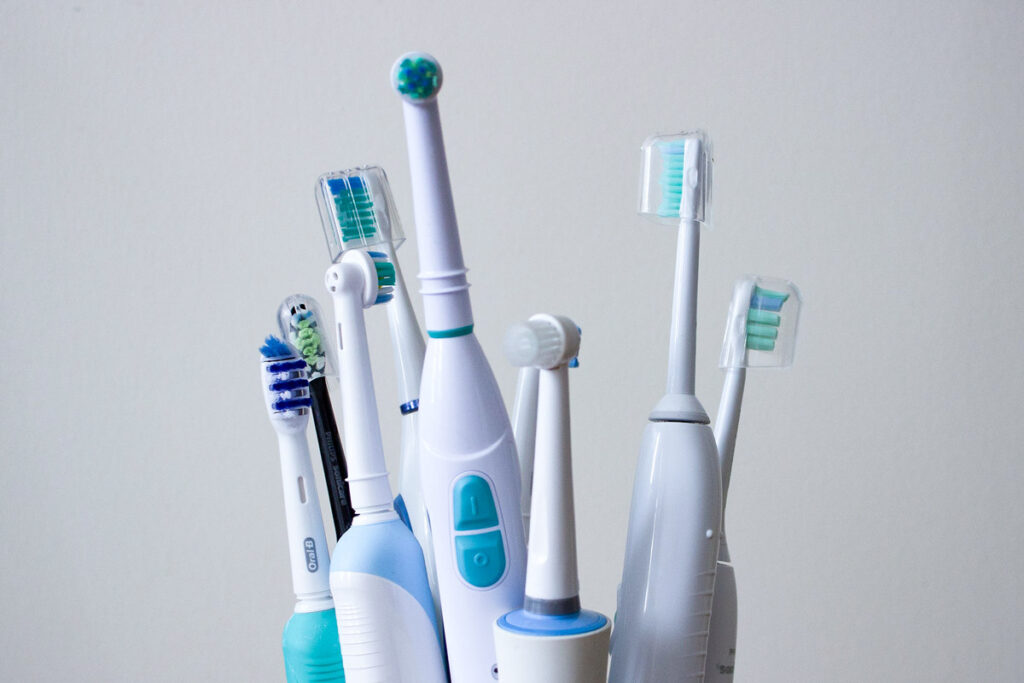Did you know that electric toothbrushes are better than manual ones? According to a study published in the Journal of the American Dental Association, over 80% of patients who switched to an electric toothbrush had better oral hygiene. No wonder more dentists are recommending them these days!
Why Use an Electric Toothbrush?
Electric toothbrushes are designed to make brushing more efficient and effective. With features like oscillating, rotating, or sonic movements, they remove plaque more effectively than manual toothbrushes. They’re also ideal for people with limited mobility, such as those with arthritis, and for anyone who wants to improve their brushing habits with built-in timers and pressure sensors.

Step-by-Step Guide to Using an Electric Toothbrush
Step 1: Prepare Your Toothbrush
- Attach the Brush Head: Before starting, ensure the brush head is securely attached to the handle.
- Apply Toothpaste: Squeeze a pea-sized amount of fluoride toothpaste onto the bristles. Avoid overloading it, as this can lead to excess foam and reduce effectiveness.
Step 2: Position the Brush Correctly
- Angle the Brush: Hold the toothbrush at a 45-degree angle to your gums. This allows the bristles to clean both your teeth and gum line effectively.
- Start with the Toothbrush Off: Place the toothbrush in your mouth before turning it on to prevent toothpaste splatter.
Step 3: Brush Your Teeth
- Let the Brush Do the Work: Gently guide the toothbrush across your teeth, letting the motorized bristles clean without you needing to scrub.
- Brush in Sections: Divide your mouth into four quadrants (upper right, upper left, lower right, lower left). Spend about 30 seconds on each section to ensure thorough cleaning.
- Focus on All Surfaces: Clean the outer, inner, and chewing surfaces of every tooth. For the inner front teeth, hold the brush vertically to reach the narrow spaces.
Step 4: Rinse and Clean
- Turn Off the Brush: Before removing the toothbrush from your mouth, switch it off to avoid splattering.
- Rinse Your Mouth: Swish water or mouthwash to remove leftover toothpaste and loosened debris.
- Clean the Brush Head: Rinse the brush head under running water and let it air dry to prevent bacteria buildup.
Tips for Getting the Most Out of Your Electric Toothbrush
- Use the Timer: Most electric toothbrushes have a built-in timer to help you brush for the recommended two minutes. If yours doesn’t, use a timer or your smartphone.
- Apply Gentle Pressure: Avoid pressing too hard. Many toothbrushes come with pressure sensors to alert you if you’re overdoing it.
- Replace the Brush Head Regularly: If the bristles appear frayed, change the brush head every three months or sooner.
- Choose the Right Brush Head: Depending on your needs, you can select brush heads designed for sensitive teeth, whitening, or deep cleaning.
- Keep It Charged: Ensure your toothbrush is charged or that batteries are replaced as needed to maintain consistent performance.
Benefits of Using an Electric Toothbrush
- Better Plaque Removal: Electric toothbrushes can remove up to 21% more plaque compared to manual brushing.
- Improved Gum Health: They help reduce gum inflammation by cleaning more effectively along the gum line.
- Ease of Use: The automated brushing motion makes it easier to maintain proper technique.
- Built-In Features: Many models include smart features like timers, pressure sensors, and even Bluetooth connectivity for tracking your brushing habits.
Know how to brush with conventional toothbrushes
Click here: How to Brush Your Teeth Properly: A Step-by-Step Guide for Healthy Smiles
Conclusion
Using an electric toothbrush is one of the best ways to improve your oral hygiene routine. By following the steps outlined above and incorporating these tips, you’ll enjoy cleaner teeth, healthier gums, and fresher breath. Remember to replace your brush head regularly and consult your dentist for additional advice tailored to your oral health needs.
Using an electric toothbrush has some cool advantages. It’s great at removing plaque and reducing the risk of gum disease, especially in those hard-to-reach areas. Plus, some people find it easier to stick to their brushing routine because they don’t have to work as hard. And let’s not forget the built-in timers that ensure you brush for two minutes.
One of the best things about electric toothbrushes is that they prevent you from brushing too hard. With a manual toothbrush, it’s easy to get aggressive and scrub your teeth and gums with too much force, leading to gum recession and tooth sensitivity. But with an electric toothbrush, you only need minimal pressure to get the job done.

